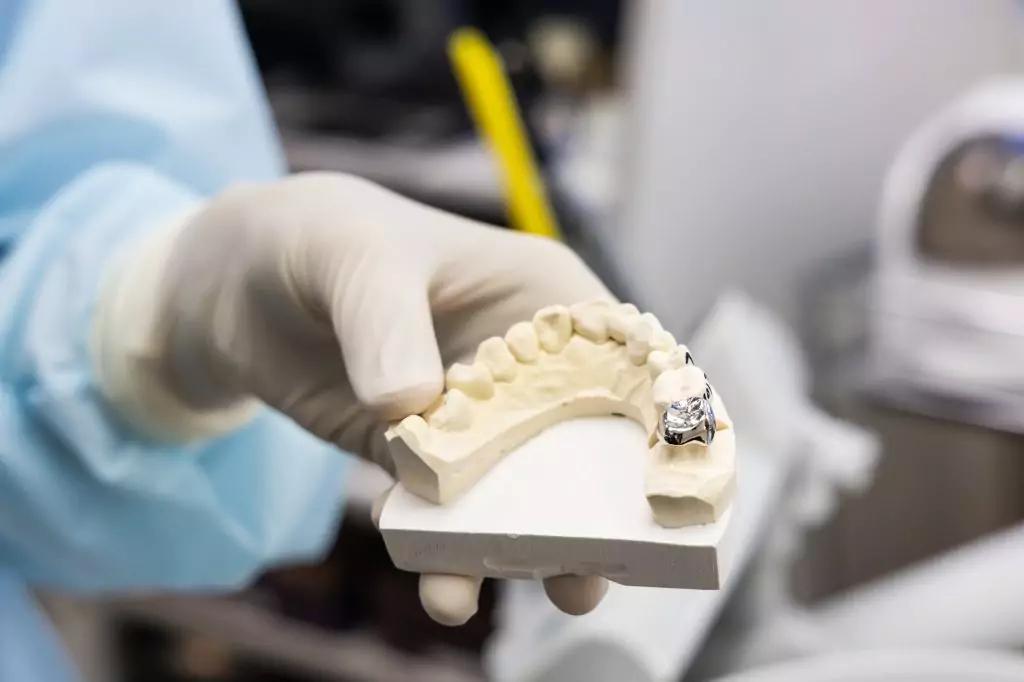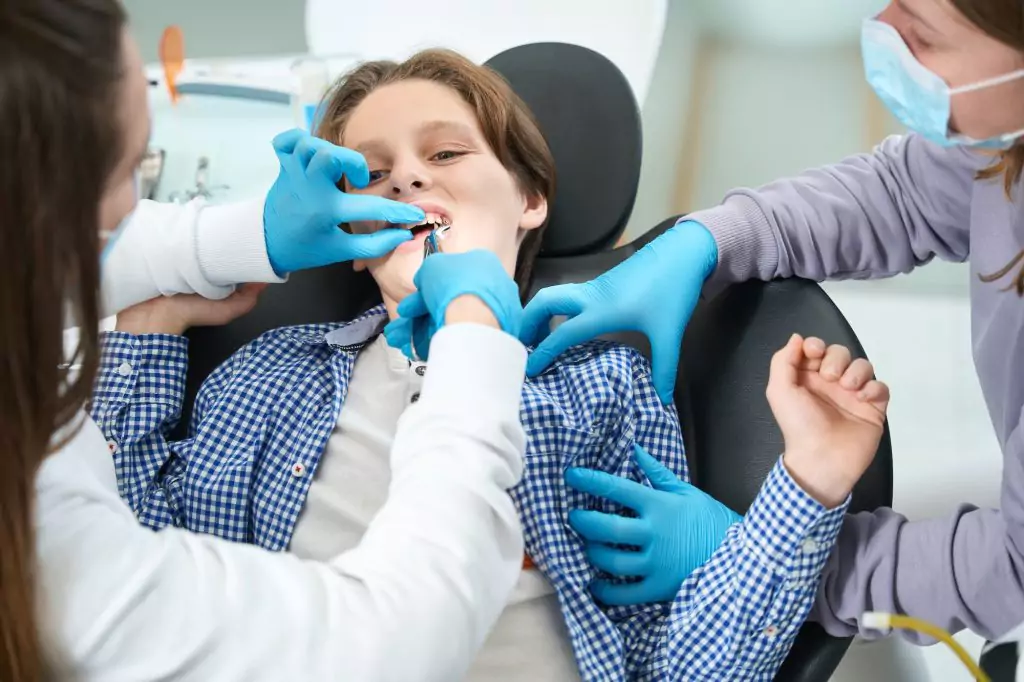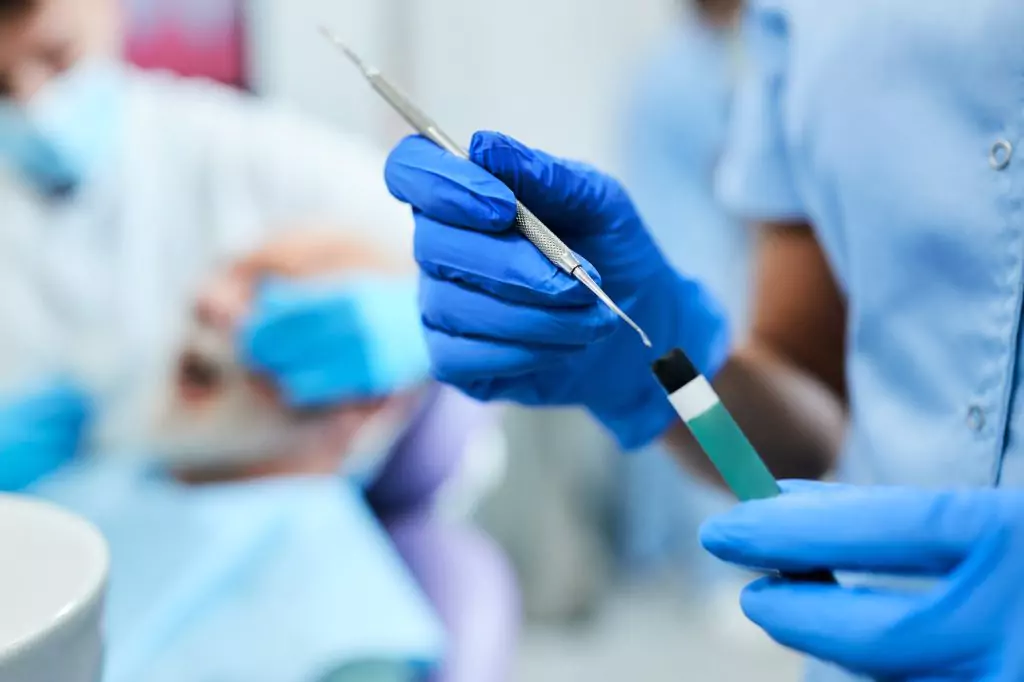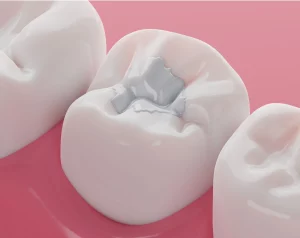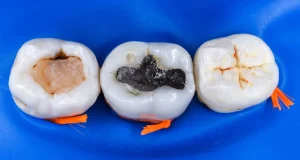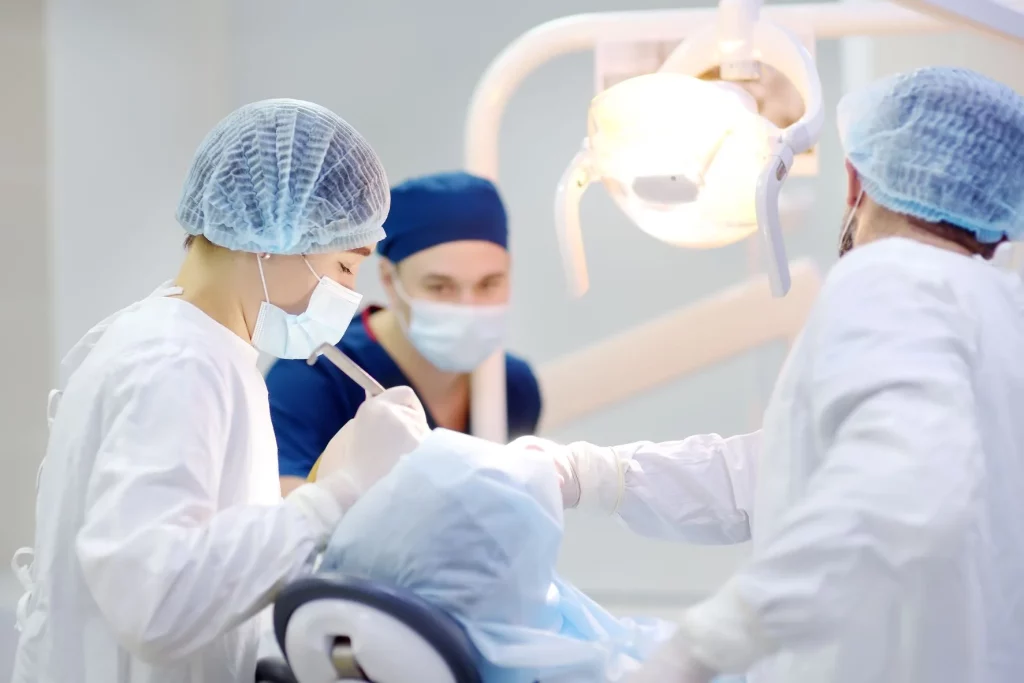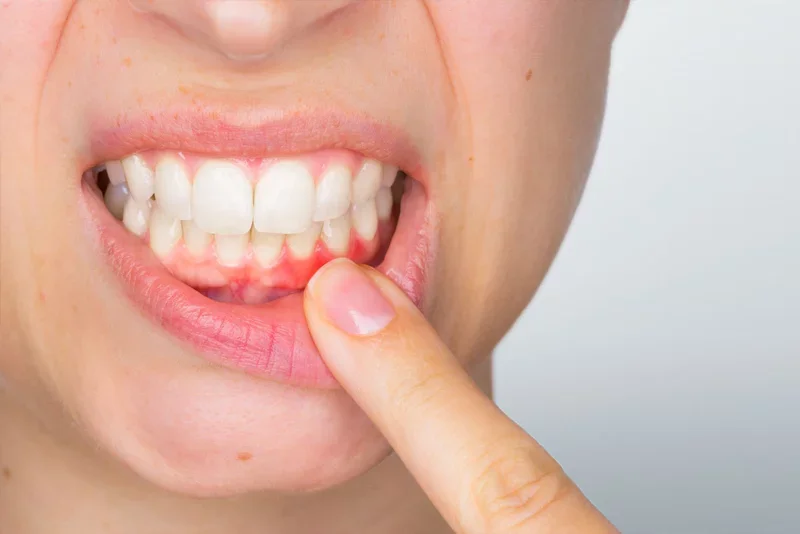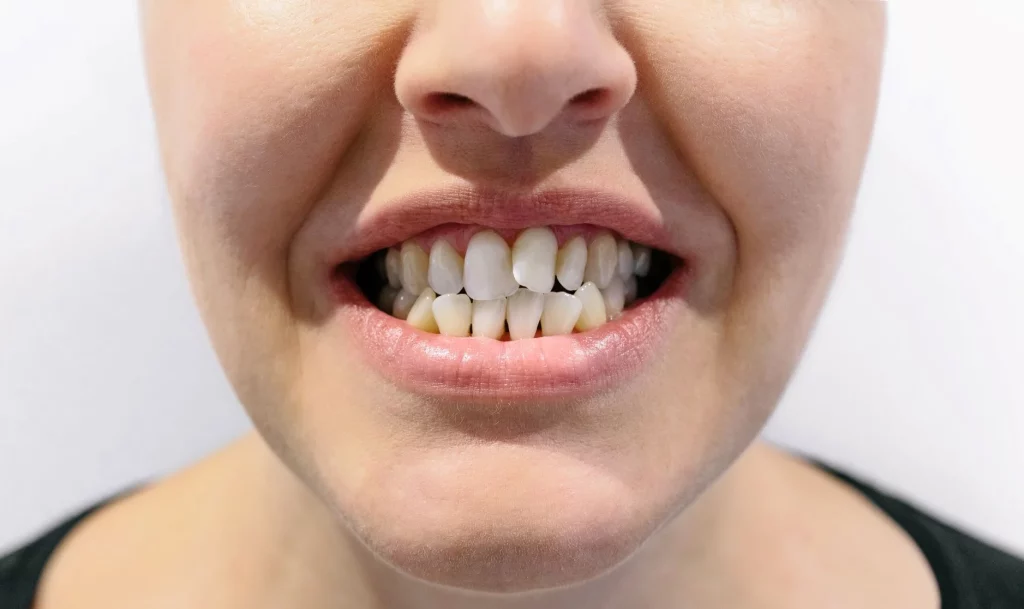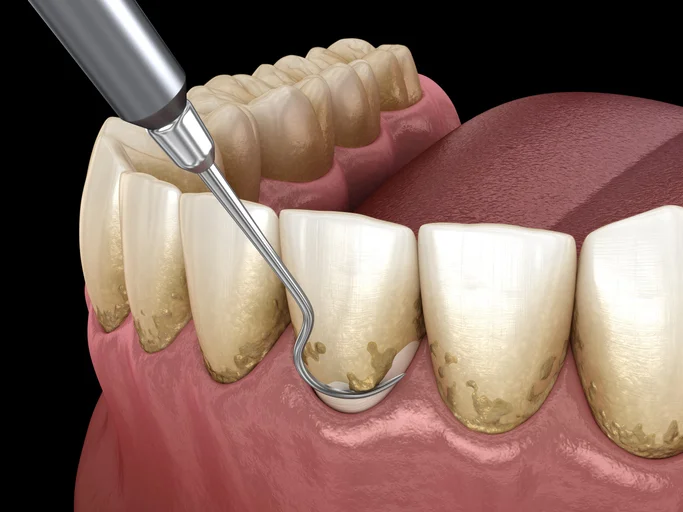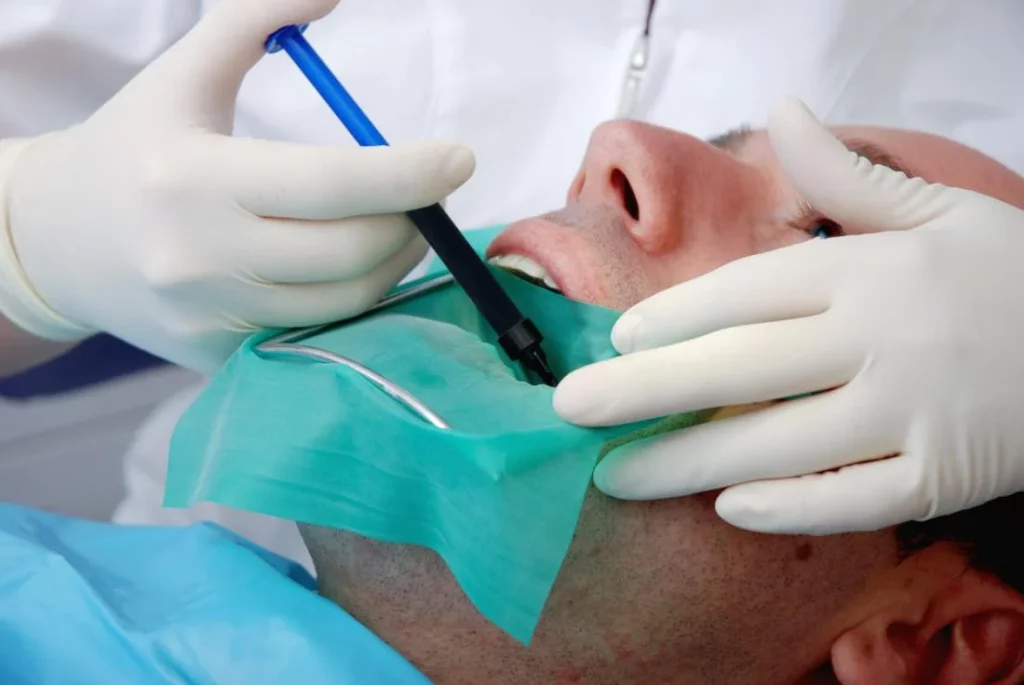© 2022 World Of Dentistry. All rights reserved.
Restorative dentistry focuses on the prevention, diagnosis, and treatment of diseases that affect the teeth and the mouth in general.
Its purpose is to restore the function, shape, and aesthetics of damaged or lost teeth and oral tissues, due to different circumstances.
What are the common causes of tooth loss?
- Cavities.
- Periodontal disease.
- Injuries and genetic factors.
Restorative dentistry offers several therapeutic alternatives to replace and restore missing teeth. Through specific procedures for each diagnosis, this specialty of dentistry facilitates the recovery of the function and shape of teeth and oral tissues that have been impacted by different dental pathologies.
Here you will find information and guidance on the restoration of dental crowns, dental fillings, jaw corrections, periodontal therapy, and bite alignments, among other treatments.
Consult each of the sections and find out the details and procedure of these therapeutic alternatives to attend to the corresponding diagnosis and facilitate the recovery of a good oral health condition and the integral well-being of the patient.
Fact Checked
Our team of writers, editors, and medical experts rigorously evaluates each article to ensure the information is accurate and exclusively cites reputable sources.
Restoration with dental crowns is a procedure that makes it easy to rehabilitate damaged or worn teeth. It allows restoring the shape, function, and appearance of the intervened piece.
There are different situations in which a dental crown is the appropriate therapeutic alternative. The most frequent cause is the deterioration of the dental piece due to dental caries that advance and affect the structure of the tooth:
- Porcelain ones are an option for the restoration of front teeth.
- The metal ones are durable.
- Ceramic ones have a more natural appearance.
If a dental crown is being considered as a therapeutic alternative for oral rehabilitation, the process begins with this note.
When is it an appropriate option? What procedure does the placement of a dental crown have? What type of dental crown is appropriate ? What to do if the crown falls off or breaks? These are some questions that may arise regarding the therapeutic option. Here we tell you.
Tooth extraction is a procedure that may be necessary for various reasons, such as advanced dental caries, periodontal disease, malpositioned teeth, tooth fracture, and lack of space in the mouth, among others.
There are two types of extraction:
- The non-surgical: fast and simple.
- Surgical: a more complex process that takes more time.
Although tooth extraction is a common dental procedure, it requires care prior to the intervention and after the procedure.
Tooth extraction should be performed by a dentist with experience in this technique.
If the extraction is done improperly, it can leave fragments of teeth or roots inside the jaw, which can cause infection and pain.
Dental fillings are a common solution in restorative dentistry to treat cavities, repair fractured, chipped, or worn teeth, and prevent major complications.
What are the advantages of dental fillings?
Several. Some of these are:
- The non-surgical: fast and simple.
- Surgical: a more complex process that takes more time.
What is the procedure that a dental filling has? What drawbacks can a dental filling present? Where do you find care for dental fillings? Here you find that information.
Dental fillings are a safe and effective solution that require care to extend their life.
Dental trauma restorations are a fundamental part of restorative dentistry treatments.
These traumas can be the result of sports accidents, car accidents, falls, or blows to the face and must be properly treated to avoid complications.
The treatment to follow depends on the type and severity of dental damage. Dental fractures fall into the following categories:
- Enamel fractures
- Enamel and dentin fractures
- Fractures involving the dental pulp.
Treatment for each type of injury is different.
Dental trauma restorations can have serious consequences if not treated properly and on time. It is relevant to receive urgent medical attention to prevent long-term complications and preserve the affected tooth.
Gum disease is a common condition that affects the gums and the tissues that support the teeth.
It can be very painful and cause permanent damage if not treated properly.
There are different risk factors that increase the probability of developing gum disease:
- Smoke
- Excessive alcohol consumption
- Diseases that compromise the immune system, such as type 1 diabetes, rheumatoid arthritis, and HIV.
If periodontal disease develops, it is essential to seek treatment as soon as possible to avoid permanent damage to the teeth and gums.
Gum disease can be hereditary. In other words, some people may be more prone to developing it than others.
The treatment to follow depends on the diagnosis, that is, the level of involvement of the teeth and gums.
Jaw and bite correction are relevant aspects in restorative dentistry, because they have a relevant impact on the health and dental functionality of a person.
The mandible is a mobile bone that is attached to the head through the temporomandibular joint (TMJ). The bite refers to the way the upper and lower teeth meet. When the jaw and bite are not properly aligned, it can cause a number of health problems.
Some of these are:
- Natural wear and tear due to age
- Repetitive chewing of hard foods
- Genetic factors.
- Diseases such as arthritis and temporomandibular joint (TMJ) syndrome.
If you suspect you have a jaw or bite issue, you should seek dental care as soon as possible and have your condition diagnosed.
Periodontal therapy focuses on the treatment of diseases of the gums and dental supporting structures.
It is an important area of restorative dentistry that helps prevent the progression of pathologies such as periodontitis and gingivitis, among others.
These are some warning signs:
- Smoke
- Excessive alcohol consumption
- Diseases that compromise the immune system, such as type 1 diabetes, rheumatoid arthritis, and HIV.
If you notice any of these symptoms, you should seek dental care to diagnose the oral health condition and prevent periodontal disease from advancing and leading to tooth loss.
Periodontal therapy is a significant area of restorative dentistry. It focuses on the treatment of gum diseases and dental support structures.
Root canal therapy treats problems inside a tooth, particularly when the pulp of the tooth (the soft tissue inside) has become infected or inflamed.
If not treated properly, the infection can spread to the root of the tooth, leading to tooth abscesses, bone loss, and soft tissue damage, among other effects.
How can the dental pulp become infected?
Some of the situations that lead to infection are:
- Untreated deep caries.
- Tooth fracture.
- Dental injury.
- Periodontal disease.
Root canal therapy is an effective and safe procedure that can save a tooth that would otherwise have to be extracted.
Currently, the aesthetic appearance of teeth is one of the main concerns of most people. Missing teeth, crooked, stained, misaligned, or uneven teeth can affect self-esteem and confidence.




